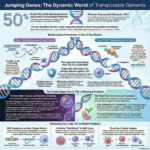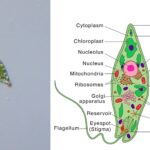Agricultural Microbiology 6 Views 1 Answers
Sourav PanLv 9July 24, 2025
Which types of microorganisms are primarily involved in cellulose degradation, and how do their roles differ?
Which types of microorganisms are primarily involved in cellulose degradation, and how do their roles differ?
Please login to save the post
Please login to submit an answer.
Sourav PanLv 9July 24, 2025
A wide range of microorganisms, including bacteria, fungi, and protozoa, are capable of degrading cellulose. They can be broadly categorized based on their environment and mechanisms:
- Bacteria:Aerobic Bacteria: Examples include Bacillus species and Pseudomonas species, which produce extracellular cellulases.
- Anaerobic Bacteria: Such as Clostridium species (C. cellulovorans, C. thermocellum) and Ruminococcus species. Many anaerobic bacteria, particularly those in the Clostridia class, produce sophisticated multi-enzyme complexes called cellulosomes for highly efficient degradation of insoluble cellulose. These are often found in environments with decaying plant material, like soils, sediments, aquatic environments, and animal guts (e.g., ruminants, termites, humans).
- Fungi:Filamentous Fungi: Including Trichoderma reesei, Aspergillus species, and Penicillium species, known for their high cellulase production. Many are aerobic and secrete enzymes freely.
- Wood-Degrading Fungi: These are further classified into:
- White-rot fungi (Phanerochaete chrysosporium, Trametes versicolor): Capable of degrading all lignocellulose components (lignin, cellulose, hemicellulose) more efficiently, especially lignin. They employ a diverse set of oxidative enzymes.
- Brown-rot fungi (Gloeophyllum trabeum, Postia placenta): Primarily degrade cellulose and hemicellulose, only slightly modifying lignin, often through non-enzymatic Fenton reactions.
- Soft-rot fungi (Aspergillus, Neurospora): Mostly ascomycetes that degrade polysaccharides in the surface layers of plants, leading to darkening and softening of wood.
- Anaerobic Fungi: Found in herbivore gastrointestinal systems (e.g., Neocallimastigomycetes phylum), they also produce cellulosomes, which can have an even more extensive collection of carbohydrate-active enzymes than bacterial cellulosomes.
The efficiency of degradation often relies on synergistic interactions between different microbial groups and their diverse enzymatic systems.
0
0 likes
- Share on Facebook
- Share on Twitter
- Share on LinkedIn
0 found this helpful out of 0 votes
Helpful: 0%
Helpful: 0%
Was this page helpful?




